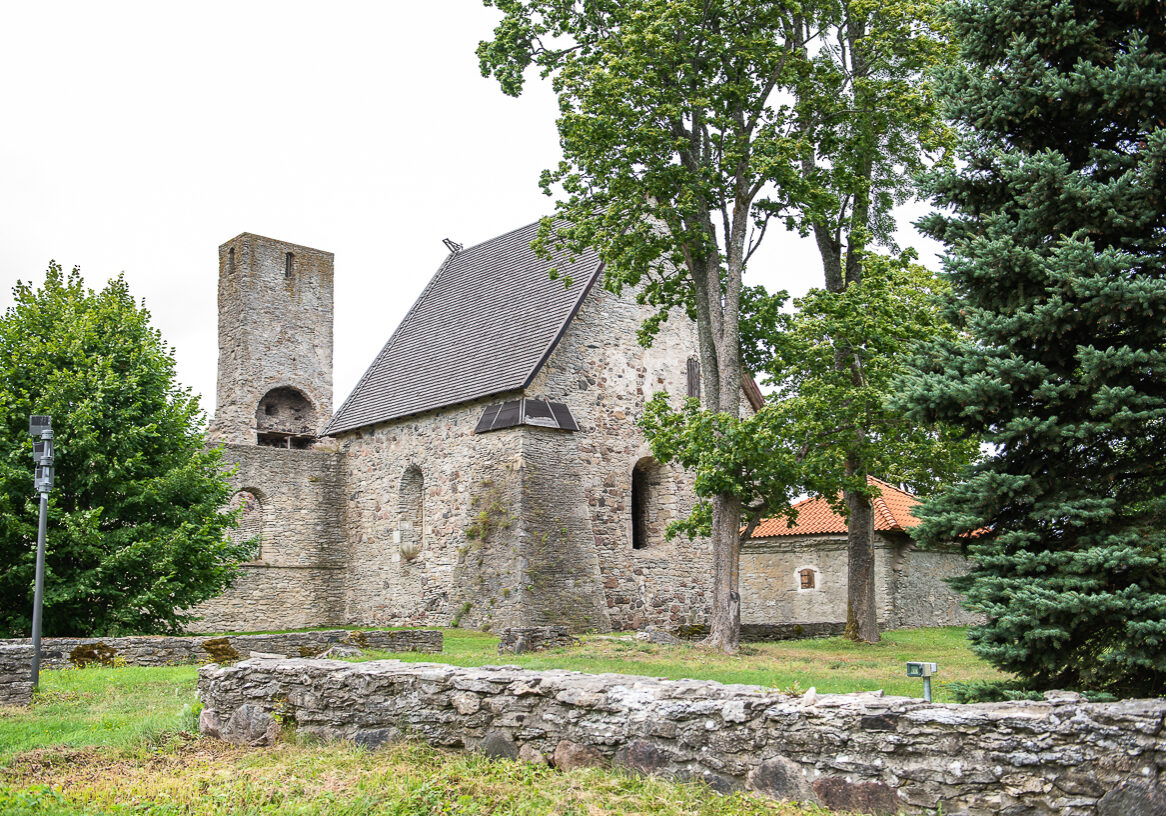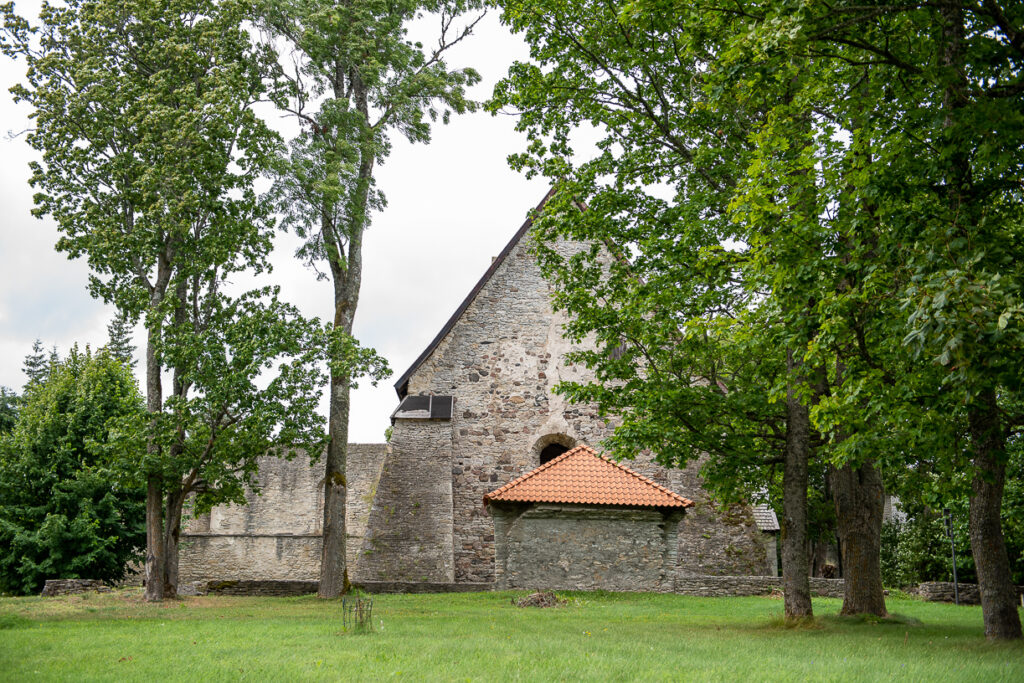Käina Martin’s Church Ruins

The ruins are located in the heart of the locality Käina. The church was built at the turn of the 15th – 16th century. The Gothic church in Käina seated 600 persons and was the biggest church on Hiiumaa. The church was destroyed in 1941. Several tombstones as well as the sun cross above the entrance are protected as art monuments. A fire in the church destroyed many art treasures: the altar of the Virgin Mary, Saint Nicholas and Saint Antonio, the organ built by the father of the Estonian composer Rudolf Tobias etc. The church also served as the parish centre for many centuries. The ruins have now been conserved, the restoration of the church is planned. The trees that surround the church form a nice park, as the locals call it.
After Hiiumaa had been divided between Livonian Order and Saare-Lääne Bishop in 1254, Käina became the centre of Bishop’s area. Probably in the 13th century already a wooden church was built in Käina.
The stone church dates from about 1500 when Bishop Johannes III Orgas ruled. The first guardian saint of the church was Nicholas, later Martin.
The speciality of the soil wasn’t taken into consideration so the church built on varved clay started to subside. The walls had to be shored up with mighty props. Käina church was very thoroughly rebuilt at the end of the 1850-s. The southern wall of the building was cut down and the former building was united with the annex in the south part of the church. This kind of solution was unique in the Baltic area. The church changed from the usual east-west side to the north-south side.
In 1660 Axel Julius De la Gardie gave 600 hectares of his possession to the church. After that Käina church became one of the biggest landowners among Estonian churches.The grave plates with relieves from the 17th century have got historical and art value.
Gallery
It is a waypoint on the journey
You might also be interested in:






